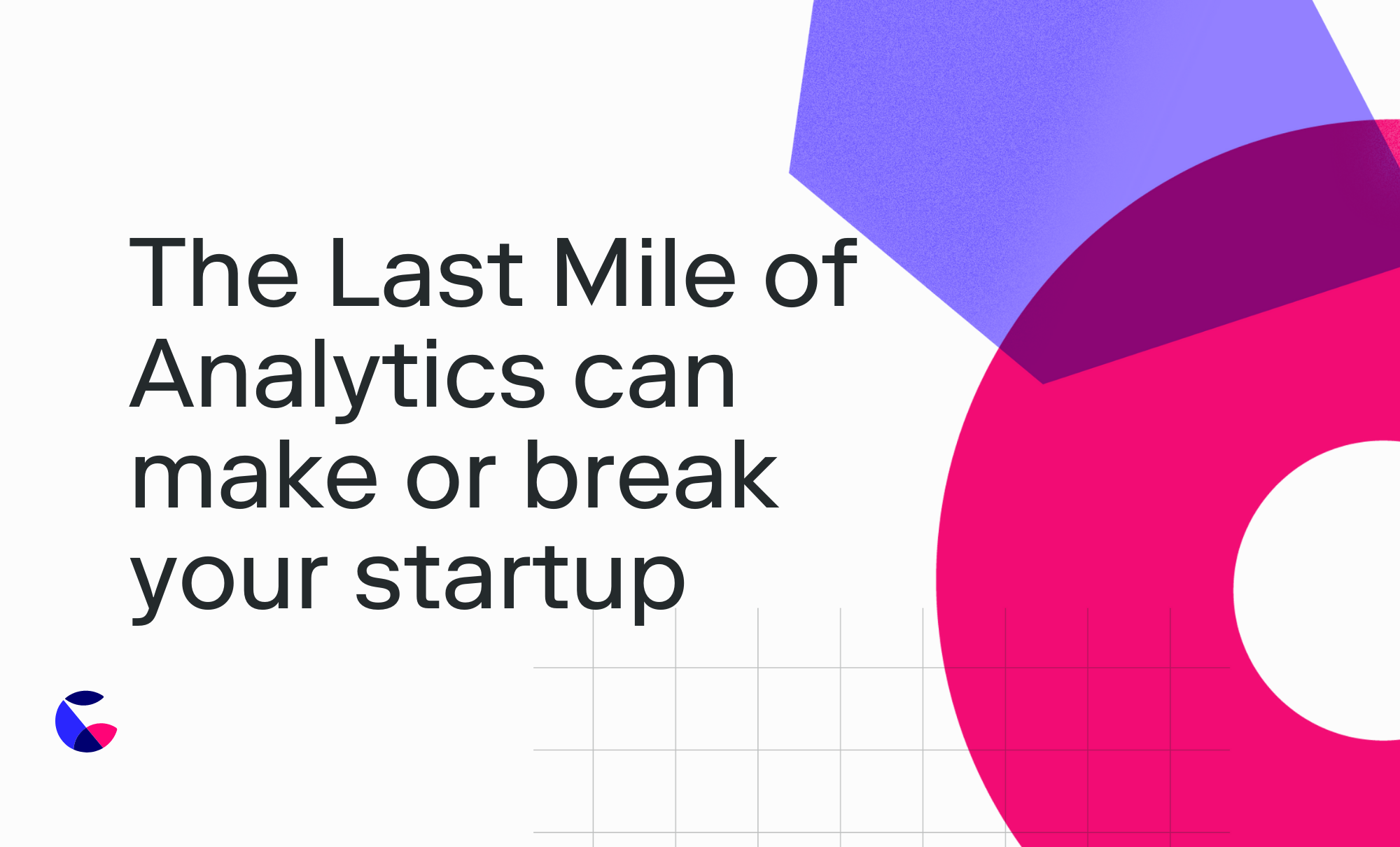The Last Mile of Analytics can make or break your startup
There is no shortage of challenges vying for the attention of our data teams. So how do you decide what to focus on? We created a 21-page guide to help you decide when it's time for you to focus on the Last Mile of Analytics.

Over the last year, I’ve noticed a shift in the way data teams describe their world. People are still rightfully concerned with data quality, creating robust pipelines, and presenting good numbers, but increasingly they are realizing that even if they’ve done all that, it’s not enough. The clean data, in well-structured reports and dashboards, still go unnoticed. Their business partners aren’t using data to move as quickly as they know they could. And they’re scrambling to work out how to fix it.
This problem is at the heart of The Last Mile of Analytics, a topic I first wrote about at first a few months ago, and since then has continued to capture my interest and time. I’m convinced it is the true name behind many of the battles we’re fighting today and can reveal an entirely new way of working with data in our organizations that we’re starved for.
So this article is meant to explain what the last mile of analytics is, why it’s important, and how we might go about addressing it.
What is The Last Mile of Analytics?
The earliest mention of The Last Mile of Analytics (as far as I can tell) came from Chris Brahm at Bain & Company all the way back in 2017. Brahm defines the problem he saw back then as:
”Seventy percent of enterprises view advanced analytics as a critical strategic priority, but only 10% actually believe they're achieving anywhere near the full potential value of those analytics. What's the source of that value realization gap? Well, we believe one of the biggest sources that we see clients struggling with is the last mile. That is the gap between great analytic output and actual changed behavior that creates value in the enterprise—whether it's a frontline worker, a manager, or even a machine.”
Despite the heavy consultant-speak, I agree with Brahm; all of us thinking about the last mile right now buy into that definition. I may even contribute my own, decidedly less formal version into the mix:
The Last Mile of Analytics refers to the space between the data team and the business teams; it is the moment between someone looking at your report or dashboard, and the action they take as a result; it encompasses all the back and forth questions we get about ‘what this graph means’ or ‘what data is included there’; it’s where we discuss the problems of our stakeholders, and how we can help solve them.
In short, it is both where our work finds value and the source of our pain.
All this begs the question if the last mile is so fundamental to how we work, why isn’t it fixed? And why aren’t people even talking about it?
What the Last Mile Sounds Like
Many data leaders I speak to are actively trying to address the last mile, albeit without saying as much. They tend to fall into variations of one of the following statements:
- “I’m looking for a self-service solution because my team is drowning in ad-hoc questions and I want the empower the business to do more on their own.”
- “I’m looking for a notebook solution because when I trusted the business to do analytics on their own, they did it completely wrong and now I need to present them something very clear so they can act on the data with confidence.”
- “I’m going down the data mesh path because we cannot do our jobs well as long as data is a walled garden. Data to the people!”
- “Data is a product, didn’t you hear? So we are building these amazing experiences for our stakeholders. They’re going to love us.”
What does each of these have in common?
- They are trying to improve the value of data in an organization
- And quicken the pace at which that value is delivered
While there is a common definition of The Last Mile of Analytics (at least between me and Brahm), very few people today acknowledge that what they’re working on is, in fact, the Last Mile problem. The solutions they seek get lumped into other initiatives. So let’s be clear, if you are working on a self-service solution, how to improve your data storytelling skills, trying to change how your business thinks about the data team or something else that is about better packaging and converting your work into value for the business, then you are attempting to solve a last-mile problem.
The Power’s in Perspective
“The real voyage of discovery consists not in seeing new landscapes but in having new eyes.” - Marcel Proust
If the Last Mile does include such large initiatives as self-service, data storytelling, or positioning your data team as a product team, the task of The Last Mile can start to feel impossible.
But to conflate the concept with the data-centric processes you see in that space today is to completely miss the point.
The real power of the Last Mile is not a playbook of process changes, but a single, subtle mindset shift. Instead of thinking about our pipeline, our outputs, and our processes, it asks us to put the business problem first. Through this lens, every interaction we have with the business is transformed, each its own opportunity to re-orientate around a new objective.
Teams I’ve seen be most successful have done so by making small changes — like teaching analysts how to extract the true business problem from a request before they write a line of SQL, or by creating processes that reward business users for asking questions, rather than actively discourage them. It’s in the culmination of micro-changes that things have space to shift and change takes root.
This has its tradeoffs though. While the idea is simple, the implementation of change is far from easy. I cannot give you a tried and tested path, because every team and culture is different, each requiring its own doses of different treatments.
Finding Clarity in Chaos
I realize this may all seem daunting and impossibly vague, that’s certainly how I felt as I started wading into it. But sometimes the best way to truly understand something is to dive into the deep end and find your way out — so that’s what I’ve tried to do.
I will continue sharing those learnings and stories on our More than Numbers blog, but in the meantime, here are the top tips I’ve found for those about to embark on their own last-mile journeys:
- Before you begin, make sure you’re ready.
Or in the words of Ice Cube, ‘check yourself before you wreck yourself’. Some of us have some maintenance work to do before we’re ready to start making last-mile changes, even minor ones.
I’ve put together a readiness guide that can help you identify and address the common issues before they become roadblocks on your journey.

You can download the guide here.
2. Find a like-minded crew.
Since the last mile is about building bridges, it’s crucial to have someone standing on either side of the bridge. Having a business partner on your team to both help you come up with ideas, requirements, and to help advocate for your changes can make the difference between success and failure.
3. Start small.
As I hinted at above before you get approval to change your org structure or get a budget to get the latest shiny tool, it’s best to see how small behavioral changes can make substantial changes.
4. Learn from others!
I will do my best to share examples and findings from the companies I’m working with, but if you can, use one of the many slack channels or forums to learn from your peers.
